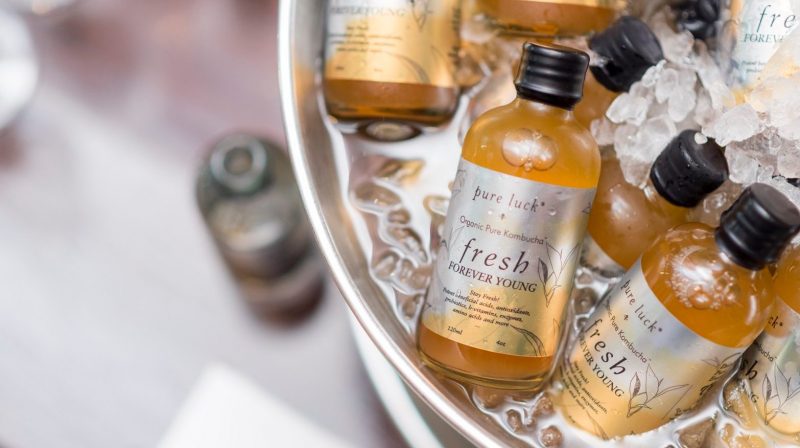
At Pure Luck® we take a scientific, as well as, holistic approach to our process. We rigorously test everything. We believe in truth and transparency. Because, at the end of the day. We are here to improve quality of life for people. You can’t cheat or cut corners. Toxins are toxic, and usually come small doses. That accumulate over time.
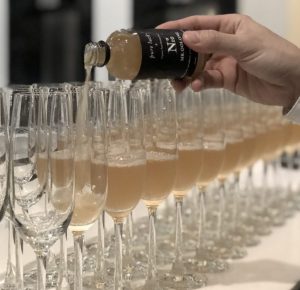 We tested our most popular flavor. Mr. Oolong. Brewing the same oolong tea. We crafted two batches.
We tested our most popular flavor. Mr. Oolong. Brewing the same oolong tea. We crafted two batches.
The first, in a stainless steel fermenter, with a glycol temperature control system. The second we fermented in our standard glass barrel. Using our standard climate control system. Both set to the same balmy 88 degrees.
Tea was brewed for glass, in glass, and for steel in steel. We used the same Pure Kombucha™ cultures we always do. Originally, fermented in glass.
There it was. Clear as day, the taste of metal. An acidic, and battery-like taste with a hint of bitterness. Hardly reminiscent of the flavor we know as Mr. Oolong. The same flavor recommended by Food & Magazine. The profile was quite different.

It wasn’t all bad. There were some nice fruity tones and flavors. However, not one that stood out. The color, was duller with an overall murky look accompanying the muddy taste profile. The aroma was fruity. Yet, this is totally opposite, of the aroma, when produced in glass. Typically, butter nutty and a bit smoky. An interesting observation, nonetheless. The steel fermentation noticeably produced more acids than glass. Leading us to conclude, as “the Cheese Nun” had concluded, that the stainless steel inhibits the growth of certain bacterias, creating a growth opportunity for others. Making the batch fermented in metal sharper, yet duller at the same time. With a more muted less balanced flavor profile.
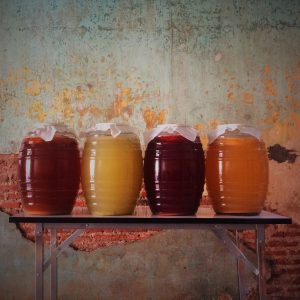 The batch in glass was typical of our best selling flavor, Mr. Oolong. Clarity of color was bright, good feeling and translucent. The flavor spectrum ranged in notes and finished like always. With a hint of smoke. Every single batch, as long as we have been making it, smells the same.
The batch in glass was typical of our best selling flavor, Mr. Oolong. Clarity of color was bright, good feeling and translucent. The flavor spectrum ranged in notes and finished like always. With a hint of smoke. Every single batch, as long as we have been making it, smells the same.
When compared side by side. Metal will never be able to reproduce the same quality of kombucha as glass does. It’s not even a fair competition. In summary we found with no doubt, you can taste the metal. You may ask then, why don’t you taste the metal? The reason you don’t taste the metal. Is for the same reason most brands filter, add juice, tea and sugar. To dilute, reduce cost and change the flavor profiles and final product.
We didn’t run a full biological panel, and DNA tests, to figure out the bacterial profile differences. However, we will soon, and report back here. Check back in May 2020 for updates.
Let’s break down what it is it about metal and kombucha, It’s a complicated relationship
Because of the acidic composition, and long fermentation, kombucha will leach toxins from it’s container (metal or plastic). You avoid this with glass and lead free, ceramic fermentors. Some question the science. We did a side by side comparison and asked ourselves. Why take the risk? We also like wooden barrels as a good option, they impart a specific flavor. We like glass because it’s best to control the flavor. Glass gives us the purest flavor of tea.
Being informed is an essential part of being healthy. It takes work, research and study. Have you ever heard of using a wooden spoon with honey instead of metal? The reason is ionic!
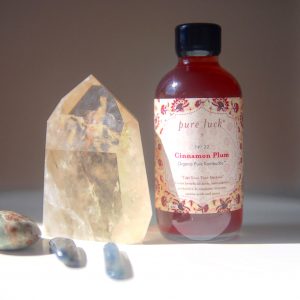
Molecules behave in a way, that not only, cannot be seen with the naked eye, but also cannot be avoided, due to the laws of physics. Energy surrounds us. Two easy examples. Our heart generates a magnetic field and so does the Earth. What about when you rub your feet on the carpet and get static shock. You can’t remove energy from any space, not even in a vacuum. It’s omnipresent.
We asked ourselves, how do neutral water molecules and living organisms interact with each other, contained in an “electrified” space? Beer is alcoholic, so for real world anecdotes we looked to cheese. The first was – how cheese is affected by stainless steel vs. wood at a microbiotic level. We found Noella Marcellino, a woman some call the “cheese nun”. A Benedictine nun, who also holds a doctorate of microbiology. This was easy actual evidence to show the affect of stainless steel on bacteria. The stainless steel threw the balance of microbiota out of equilibrium. Allowing certain bacteria, like e-coli to thrive, while killing other helpful bacterias.
More research revealed studies showing how the stress levels of animals changed as a result of their enclosure. When enclosed by an electrified fence animals excreted more stress hormones than when a natural barrier was used. This in turn altered the flavor profile and hormonal content of the milk. Actually, the best cheese really does come from from the happiest, stress free animals!
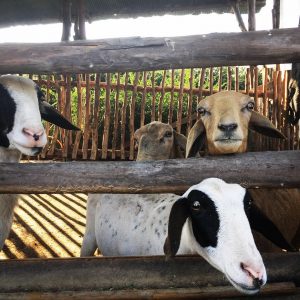
How does stainless steel affect bacteria growth? Negatively, as an anti-biotic, creating a less diverse population of microbiota and therefore, less energetic outcome than could be achieved by using a sum neutral vessel, like glass, lead free ceramic or wood. What is the “ambient charge” of a steel fermentation vessel? If it’s been de-magnetized, a metal vessel can still collect ambient charge. Just like a person can collect “static cling” – or you can feel someones vibe. Using a metal fermentation vessel the kombucha brewer is unknowingly throwing out of balance, microbiota and energies of scale at an atomic level.
Say what?? Try this. Of all the vessels recovered from archeological sites worldwide. Have you ever seen a stainless steel artifact once? There’s a bureaucratic reason every kitchen is required to use NSF stainless steel in the modern age. It’s not because it is the best way always. It’s because it’s anti-biotic. With cultures, bacterias and tea we find that it’s always best to use natural materials like neutral glass, lead free ceramic or wood for quality, energy and taste retention. It just makes sense.
Wait, don’t most breweries use stainless steel, or plastic drums to ferment kombucha?
Most do, indeed. This is the status quo of capitalism. Large scale glass doesn’t exist. Maybe it’s not as fast. Call it Slow Kombucha, but we put your health, taste and quality ahead of ease of operations and fast batch turn around. It’s just the way we do things at Pure Luck®.
